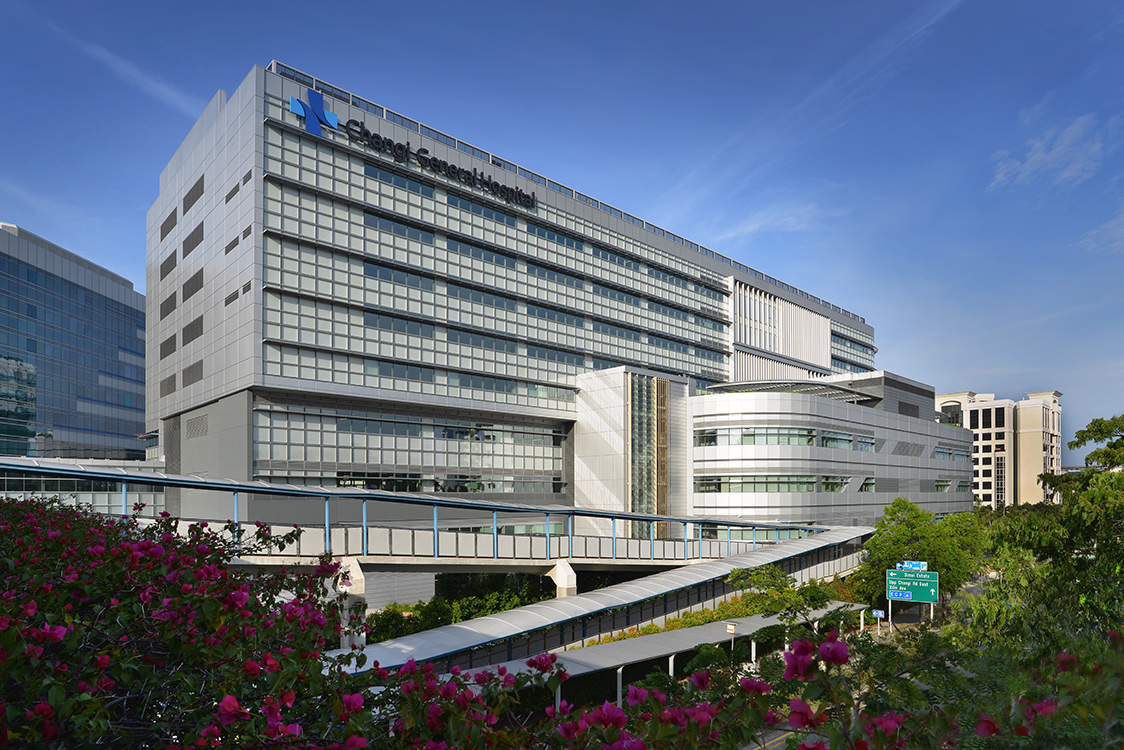
Health-Care Facilities Contributing to Well-Being
Changi General Hospital Medical Centre, Singapore (2018)
Partnerships to construct health-care facilities that support people’s well-being is a particularly meaningful business activity for Shimizu, whose credo is the Analects and the Abacus. With the know-how developed in Japan, we have worked on numerous projects outside Japan as well.
Bringing Healthcare Services to the Mountainous Areas - Medical Facilities in the Western Region of Nepal
In 1978, Shimizu received an order for the first project to build medical centers and clinics in the western region in Nepal. It was the first Japanese Official Development Assistance (ODA) project for us in the country, in which Shimizu built 12 medical facilities in a large area, stretching from the capital Kathmandu, to Pokhara, Lumbini and the Terai region close to Indian border.
With most of the works proceeded in mountainous areas where there were hardly any paved roads, the construction was extremely challenging. However, its experience led to subsequent projects to build the Tribhuvan University Teaching Hospital and the National Tuberculosis Centre in Nepal.
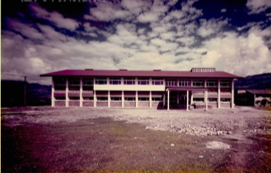
Medical Facilities in the Western Region of Nepal
- Size
- 2F, 38 bldgs.
TFA 3,974m2 - Completion
- February 1980
Basic Medical Services for the General Public - Lusaka Health Centers to District Hospitals Phase 1 and 2, Zambia
Zambia is a landlocked country in Southern Africa. In Lusaka, the capital province, with approx. 15% of the national population, there are not enough institutions capable of providing basic medical services.
Since 1981, Shimizu has been involved in the Japanese ODA projects to build basic medical and educational facilities, such as the Pediatric Surgical Center in the Zambia University Teaching Hospital and the Tuberculosis Laboratory in Lusaka.
In recent years, through designation of clinics whose services to be enhanced in each region, the Ministry of Health of Zambia plan to increase the number of primary-level hospitals which can provide surgeries, examinations, and hospitalizations. JICA decided to provide ODA Grants for this project from 2013.
Our company worked for the projects to construct five hospitals in the Lusaka Province; in Matero and Chilenje for the Phase 1 and in Kanyama, Chawama, and Chipata for Phase 2. We also constructed the regional hospital in Kitwe in the Copperbelt Province, the second largest city in terms of population in Zambia. These hospitals are providing better access to medical services to the people.

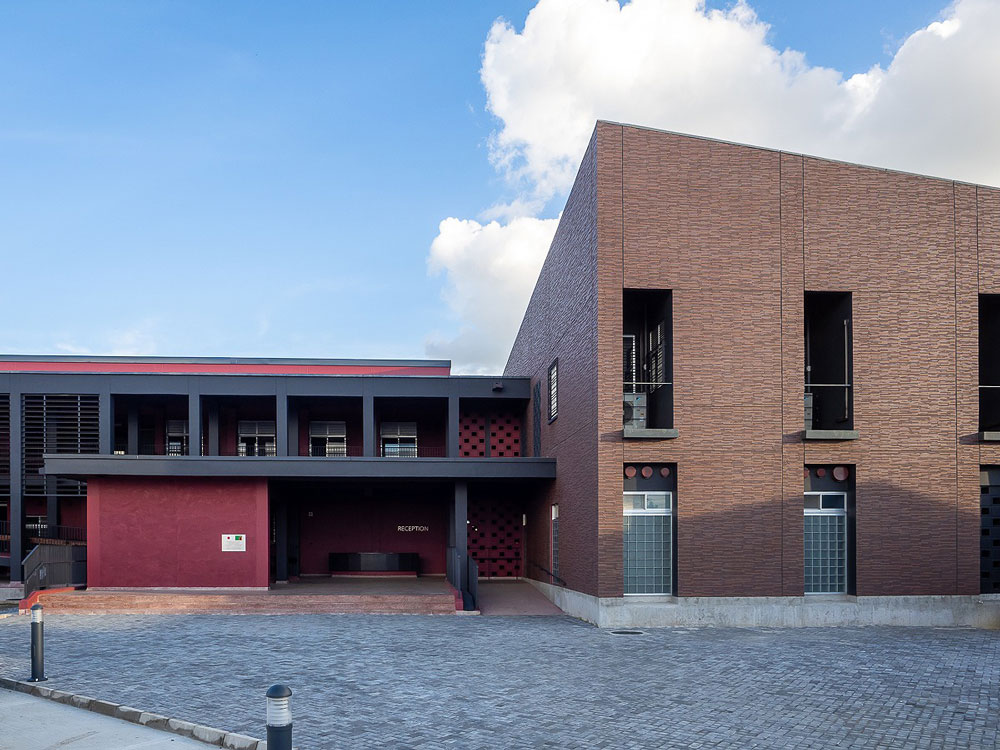
Tackling Infectious Diseases - Advanced Research Center for Noguchi Memorial Institute for Medical Research, Ghana
In Ghana, where infectious diseases such as malaria and HIV account for more than 70% of the major diseases, local medical services are hardly adequate. The Noguchi Memorial Institute for Medical Research was established in 1979 to improve such a situation with Japan’s ODA. As an additional facility to the Institute, the Advance Research Center was completed in September 2018.
The center has the advanced laboratory facilities, including the BSL3 (Biosafety Level 3) laboratory which can handle high-risk pathogens, as well as virology, bacteriology, immunology, and molecular biology laboratories. Thanks to such facilities, more sophisticated and advanced research can be conducted safely now.
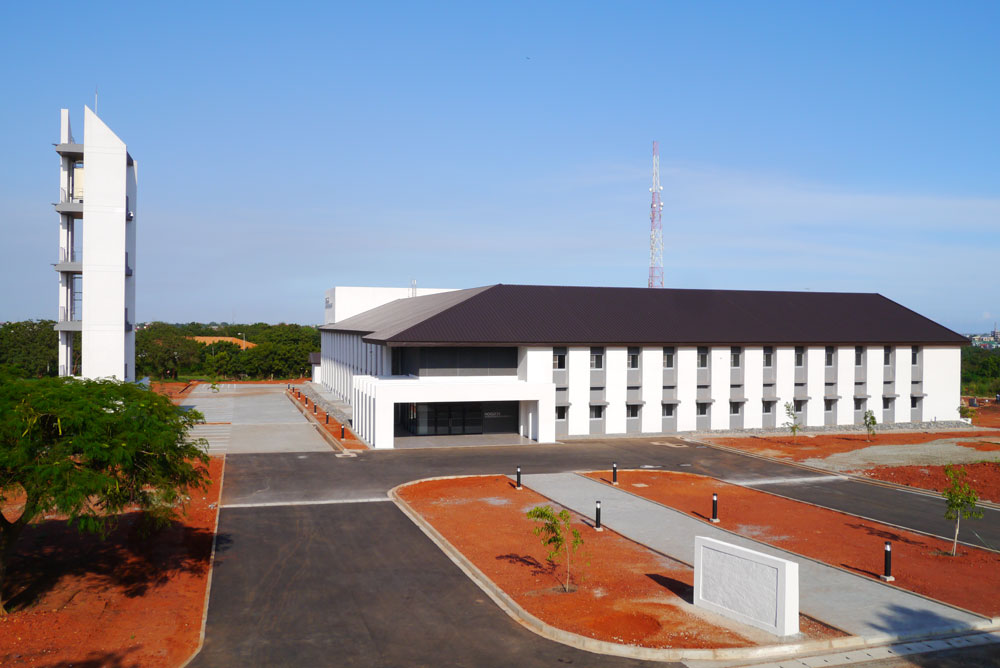
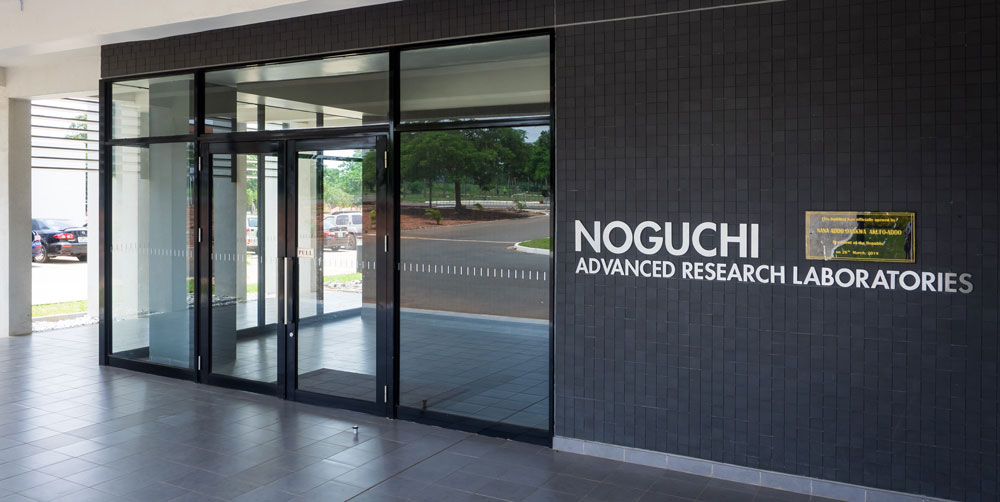
Advanced Research Center for Noguchi Memorial Institute for Medical Research
- Size
- 3F, 3 bldgs.
TFA 5,504m2 - Completion
- September 2018
The Most Advanced Medical Facility - National Cancer Centre Singapore
In May 2017, we have received an order to build the National Cancer Centre Singapore, a large hospital equipped with the first proton-beam therapy facility in the country, from the Ministry of Health (MOH).
Proton beam therapy enables a dose of high energy protons to be precisely targeted at a tumor, reducing the damage to surrounding healthy tissues of the patient. Especially in developed countries, it is now widely utilized as one of the advanced medical treatments though,, the facility requires a radiation shielding system.
We made good use of our expertise and managed to complete it successfully in May 2020.
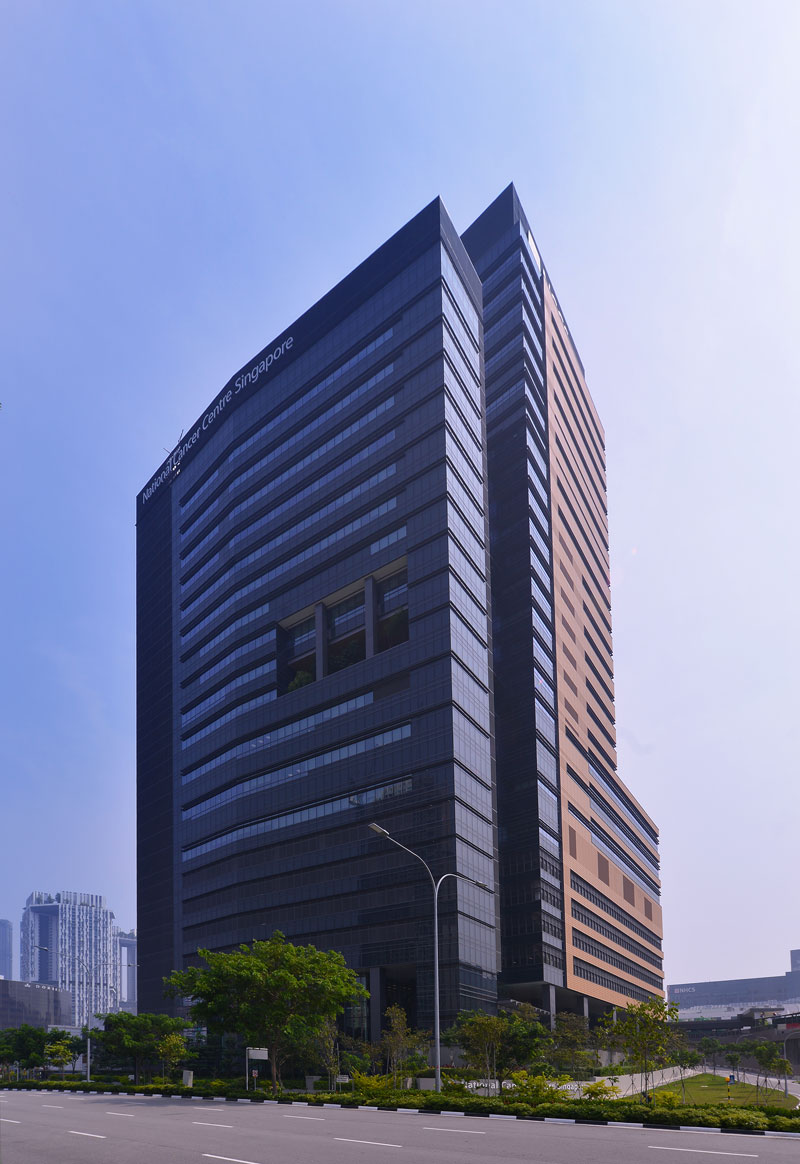
The Most Advanced Medical Facility - Radiation Sciences and Proton Therapy Center, National Taiwan University Cancer Center
Taiwan has a high reputation as a country who can provide highly advanced cancer treatment. In particular, Taiwan currently has four facilities that can provide proton beam therapy, a type of radiotherapy. No other place in Asia has so many facilities to provide this therapy.
Valuing Shimizu’s construction history and expertise of facilities similar to this in and outside Japan, they decided to contract us to build the Radiation Sciences and Proton Therapy Center, National Taiwan University Cancer Center.
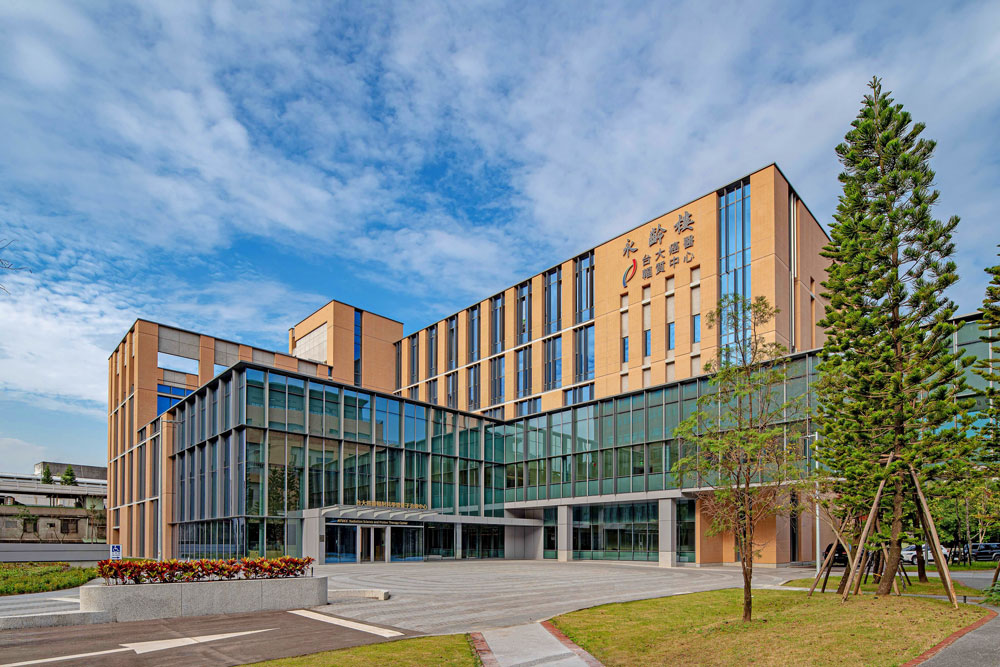
Radiation Sciences and Proton Therapy Center, National Taiwan University Cancer Center
- Size
- B4F/4F
TFA 22,000m2 - Completion
- May 2022
Shimizu’s Mission to Build Healthcare Facilities
Our mission is to contribute to realizing healthy, safe, and secure society by building health-care facilities. Studying the facility comprehensively from the perspectives of “business”, “facility” and “operation”, we have always worked together with our clients to find the best solution for every step, whether it is studying a business plan, drafting a basic concept, designing, construction, or maintenance and operation.
We will continuously be committed to realize healthy life of people around the world, offering our experience and expertise earned in and outside Japan.

The information posted here is the current information on July 4, 2025.
Please be aware that this information may have changed by the time you view it.


